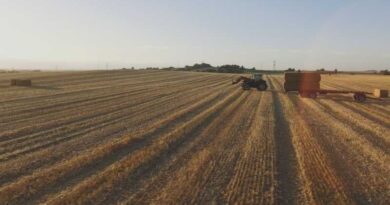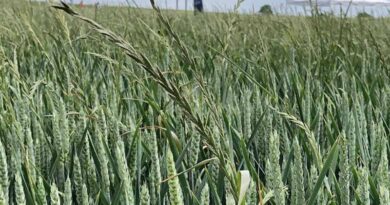How Can Regenerative Agriculture Benefit My Farm?
01 November 2023, US: Regenerative agriculture is quickly becoming a popular topic of conversation across the ag industry, but there still may be some confusion about what it means and why it’s important.
Let’s take a closer look at regenerative agriculture and the benefits it provides.
What Is Regenerative Agriculture?
Regenerative agriculture is a holistic land management practice that includes farming and grazing methods that help improve soil health and biodiversity while reducing carbon dioxide emissions that may contribute to climate change.
Regenerative agriculture practices aim to:
- Improve farmers’ productivity and profitability potential
- Restore soil health, including microorganism biodiversity
- Help mitigate climate change through plant carbon sequestration and greenhouse gas emission reductions
- Maximize production potential on current farmland to avoid further deforestation and land conversion
- Produce healthy, nutritious food to feed a growing population
What Agricultural Practices Qualify as Regenerative?
There are a variety of agricultural practices that qualify as regenerative, although not all practices will apply to every situation; like conventional agriculture, regenerative agriculture requires a customized approach to ensure farmer success.
The following practices can help achieve the goals of regenerative agriculture.
Reduced Tillage
No-till or conservation tillage methods can promote greater agricultural productivity by improving the soil’s chemical and biological structure while increasing water penetration and retention.
Tillage degrades soil aggregation and reduces beneficial soil bacterial and fungal populations. In addition, tillage releases carbon dioxide the soil has sequestered from the growing crop. Conservation tillage methods can also help reduce erosion to keep productive topsoil in fields.
Cover Crops or Double Crops
Cover and double crops help keep plant matter growing in fields year-round, reducing erosion risks and improving soil aeration, moisture and nutrient-holding capacity. Cover crops are often planted after a cash crop to increase the amount of soil organic matter, which improves nutrient cycling and can ultimately lead to lower fertilizer costs.
Crop Diversity
Monoculture production systems can strip the soil of essential plant nutrients and increase the risk of pest pressure and pesticide resistance. Adding crop diversity by rotating crops or interseeding cover crops can help manage pests, reduce overreliance on the same herbicide classes and nourish beneficial microbes with a more diverse diet.
Precision Agriculture Field Management
Using precision agriculture to apply zone management to fields helps optimize fertilizer and crop protection applications, reducing adverse effects on the soil and water.
Well-managed Grazing Practices
Integrating livestock into crop production can help improve soil fertility and structure by adding manure to fields. Well-managed grazing practices can also stimulate plant growth and increase soil carbon sequestration.
What Are the Benefits of Regenerative Agriculture?
Regenerative agriculture offers many benefits to farmers, the environment and consumers. A recent analysis by Boston Consulting Group estimates farmers can achieve 70% to 120% higher profitability and a return on investment of 15% to 25% over 10 years once they’ve reached a steady state with regenerative practices that have been customized for their farms.
Higher profits are achieved through lower input costs (less fertilizer and pesticides) and higher productivity with the help of healthier soil. Regenerative practices also preserve the longevity of a profitable operation by improving soil health and crop productivity over time.
More broadly, regenerative agriculture has numerous positive global impacts, including:
- Less deforestation: Existing arable land can produce higher-yielding crops to support a growing population.
- Improved biodiversity: Regenerative practices help maintain healthy microorganism, plant and animal habitats for greater biodiversity.
- Fewer greenhouse gas emissions: Less fertilizer use, more carbon sequestration and reduced tillage result in fewer greenhouse gas emissions.
- Greater food security: Crops produced with regenerative practices can help meet global food demands while preserving valuable natural resources.
Rewarding Regenerative Agriculture with FBN® Finance
Regenerative agriculture not only plays a key role in optimizing soil health and maximizing crop yield, but it can also reduce farm costs and ensure long-term farmland value for future generations.
At FBN, we believe that farmers’ forward thinking and proactive ag management should be rewarded.
Eligible farmers can qualify for a 0.5% interest payment rebate* on an approved Regenerative Agriculture Finance Operating Line from FBN Finance. After sharing data to validate program requirements at the end of the growing season and repaying their Operating Line, participating farmers will receive an interest payment rebate check.
The program is one of the first U.S. agricultural financing initiatives to incentivize farmers to implement regenerative ag practices.
Also Read: John Deere Foundation announces $19 million in grants aimed at eliminating global hunger
(For Latest Agriculture News & Updates, follow Krishak Jagat on Google News)















